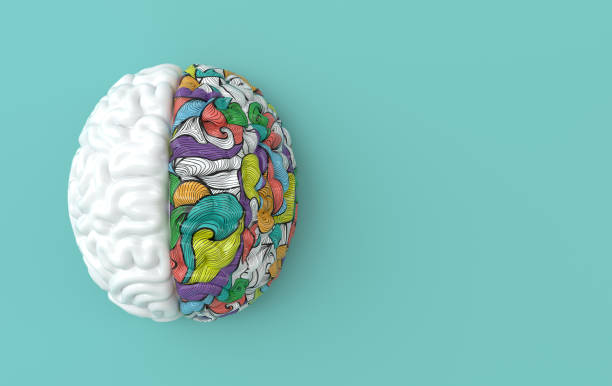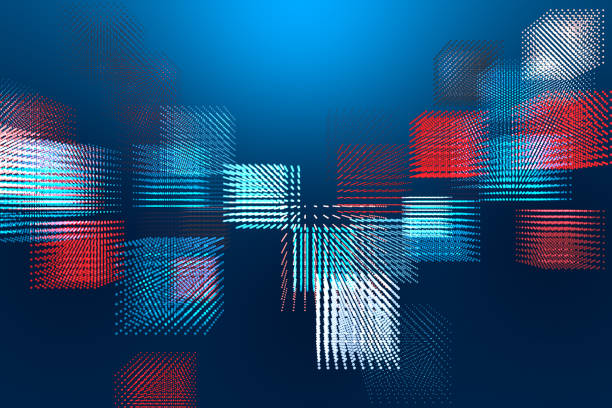In recent months, nonfungible tokens (NFTs) have taken the world of blockchain and cryptocurrency by storm. More artists and participants are joining the nascent sector as it continues to flourish significantly.
Ever since the NFT world went berserk with the sale of Beeple’s art, more players have come in with some of them seeking ways to emerge on top of the market. That is where artificial intelligence came in handy. Some creators and developers have come up with ingenious ways of generating art from computers and it seems to be gaining popularity among investors.
Back in March 2021, one New York editor of Spike Art Magazine, Dean Kissick, wrote in a column:
“The most popular series of NFT collectibles are algorithmically generated.”
Kissick wrote that when the NFTs craze was just beginning to explode. He described artificial intelligence’s massive impact on culture, and he is not alone in his analysis and opinion. Several critics allege that algorithms and computer programs produce bad art and make culture look cheap in general. Kissick explained:
“The problem is that we want too much content, too fast, and it just leads to this endless algorithmic churning, this paint-by-numbers effect. You see it in art. In Netflix documentaries. Spotify playlists. Op-ed pages. The news. The latest manufactured outrage. Well-reviewed first-person novels about nothing. All so dreadfully banal and repetitive.”
Kissick’s column was published in March before artificial intelligence-generated NFTs came to dominate the budding space. For now, AI seems to have managed to breach the walls of the fine art world through auction houses.
Manufactured Art Rapidly Replaces Unique NFTs
This past summer, crypto enthusiasts were served with many successful profile-pic NFT projects (PFP NFTs) which made them call it a “JPEG summer”. Some of the most famous PFP NFTs include Pudgy Penguins and Bored Ape Yacht Club. All these series appear to capitalize on the success of CryptoPunks that continue to dominate the NFT world.
Interestingly, all these projects share a process that majorly depends on artificial intelligence and computer algorithms. A bucket filled with virtual assets is created. These assets come in different design features, accessories, and exclusive traits. They are then mashed together using a procedural generation algorithm that develops thousands of unique art combinations.
According to Franky Aguilar, a PFP project creator, this type of art-making that involves artificial intelligence is a great and easy way to generate 10,000 unique images. Notably, the issues that arise with making successful PFP projects barely lie with the artistic process. But, they now define the most sought-after assets on the NFT market.
Sotheby’s just sold a bundle of 101 Bored Apes generated from the Bored Ape Yacht Club collection for a staggering $24.4 million. In the coming days, Christie’s is scheduled to offer an in-house PFP sale. Critics believe that the problem lies in the fact that manufactured art is rapidly replacing unique artworks as artificial intelligence replaces talented human artists.
Art Blocks Makes Algorithmic Art Compelling
Critics have come up to say that algorithmic art is not unique and does not compel aesthetically like the nonfungible tokens created by real artists. But, one new generative art platform, Art Blocks, has come to change all that. The platform strives to prove that algorithmically generated art can also be unique, complex, and aesthetically compelling.
Artists upload their algorithm on Art Blocks and set the limit on the number of iterations that they can produce. The buyers and investors come in and choose an algorithm that has their desired style and then mint multiple pieces. Every piece is unique and randomly generated, which makes AI-generated NFTs quite interesting.
Analysts say that the new strategy of art creation works like a “get-what-you-get” gumball machine. However, some of the buyers treat what comes out of Art Blocks as a stock option.
For now, Art Blocks is not worried about the value of nonfungible tokens in the long term as they are about raising standards of algorithmic art. While explaining how the generative artists normally make their unique work, the CEO and founder of Art Blocks, Erick Calderon, said:
“Until today, a [generative] artist would create an algorithm, press the spacebar 100 times, pick five of the best ones and print them in high quality. Then they would frame them, and put them in a gallery. Maybe.”
Art Blocks appears to have successfully changed the status quo for generative art. Calderon added:
“Because Art Blocks forces the artist to accept every single output of the algorithm as their signed piece, the artist has to go back and tweak the algorithm until it’s perfect. They can’t just cherry-pick the good outputs. That elevates the level of algorithmic execution because the artist is creating something that they know they’re proud of before they even know what’s going to come out on the other side.”
What Makes For Good Generative Art?
Although generative art is not relatively new since it started in the 1960s, it is still a nascent type of art. The top collectors of generative art are now starting to approach issues of value, aesthetics, and subjective taste.
There is a learning curve for everyone interested in the NFTs world to determine what makes for great generative art, including the complex code that achieves high variety and consistent quality.
Attention to quality seems to be paying off with Art Blocks recording nearly $600 million (184m Eth) in sales in August. The sales were spread across 51,000 transactions that featured at least 12,000 buyers. Art Blocks recorded a peak selling day that features $69 million in transactions on August 23.
Christie’s has confirmed that it will be offering NFTs from Art Blocks in an October 2021 postwar and modern art auction. Based on one Dapp Radar report, the wealthiest collectors in the NFTs sector have Art Blocks pieces that they are refusing to sell. The report reads:
“It is clear that some collections are now perceived as safe assets for storing and gaining value, as is the case of Art Blocks and CryptoPunks where their whales did not reduce their current holdings, but they increased them (in the case of Art Blocks).”
The rise in AI-inspired NFTs has resulted in a lot of ‘bad blood’ between the generative artists and their physical counterparts. While some physical artists say that the new trend will fade away in the near term, generative artists are convinced that their medium of art creation is here to stay.
Tyler Hobbs, a generative artist who has produced art pieces using Art Blocks including the Fidenza series, wrote in an email:
“The bulk of our lives [is] moving into digital environments, which are of course constructed with algorithms. Should artists strain to avoid these algorithms? No, we’re better off claiming them for ourselves.”
While responding to Kissick’s criticism, Hobbs said:
“I won’t claim that most algorithmic artwork is good, or that there aren’t a large number of people in it for the money, as always. But, if you understand the art form I think you’ll see that at the core there’s something special taking place.”
Generative Art And Blockchain
Generative art seems to be an expected product in the digital age. During the industrial age, people used industrial materials to create a variety of products. Industrial materials are used in the building of buildings and some daily necessities.
Turning to the information era, people use much of their time in the software space. News reading, social interactions, shopping, gaming, taxi rides, and much more rely on software. Hence, coding is reshaping the relationships in production and human life.
Hobbs said that materials are an integral part of art. They are as influential as architects. The architects have designed steel and concrete to construct modern cities, and in the process have shaped the way of life. Tyler Hobbs thinks that computer programming is not a neutral medium.
For generative artists, programming seems to be the core material for the information age. Artists are compelled to use computer languages to complete their expressions. In that process, artists and software struggle to gain a deep understanding of each other. Thus, artists will participate in changing the concept of software in the future to help revolutionize the world of generative art.
Hobbs tested many careful designs, which are believed to have given his program some degree of randomness. His program focuses on building blocks and structured curves. However, it has a lot of possibilities about color, organization, texture, and proportion. Hence, it is rich in variety and is not entirely under the artist’s control.
Artists are now turning to blockchain infrastructure as it continues to mature aiming to enhance the quality of generative art that they produce. Currently, artists appear to be experimenting on the Ethereum blockchain aiming to create a new form of generative art in the encryption era.
After encountering blockchain, generative art now seems to have unexpected opportunities for different expressions. Previously, artists had to conduct a ‘selection’ process to obtain ‘good’ works of generative art. Artists test many outputs and then select the best set that they show to the public.
But with advancements in technology, artists can now create generation scripts that are written into the Ethereum blockchain to make them validatable and immutable. They can then decide the number of times that they want a certain output to be generated. The outputs become NFTs that are then generated by the collectors.
When such multiple output processes are involved, nobody will know what happened in the art generation process. thus, there is a certain level of randomness in the creation of generative art in the blockchain space. But, the issue of creating quality work persists. It needs a great design of the generated algorithm, which is also believed to be a quality assurance process.
In the case of creating the Fidenza series, Hobbs spent over two months experimenting with the algorithm to increase the randomness of the end product and room for quality improvement. Therefore, artists need to balance the diversity and quality of standardization.
On the flip side, they need to plan for specific integrity to help realize individuality. These are not easy processes. But, when they are undertaken properly, the generative arts produced on the blockchain are perceived to be a form of high-quality NFTs by the collectors and buyers.












